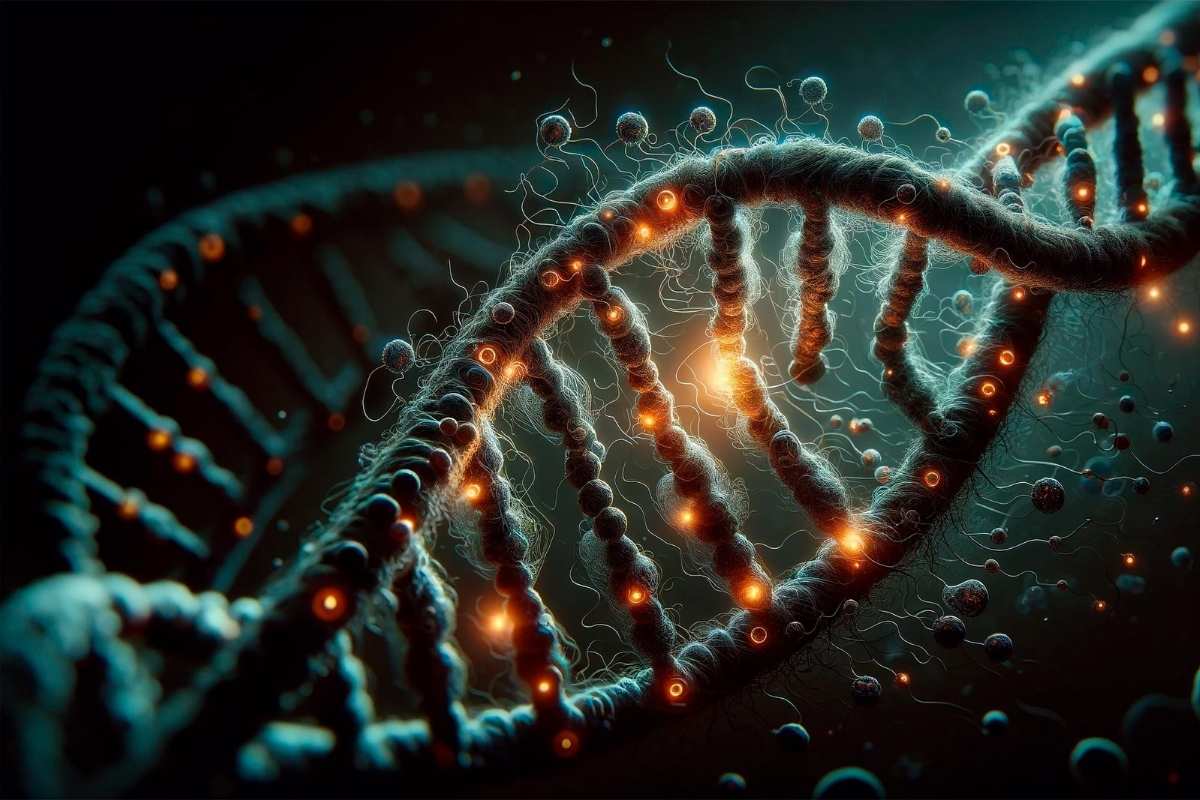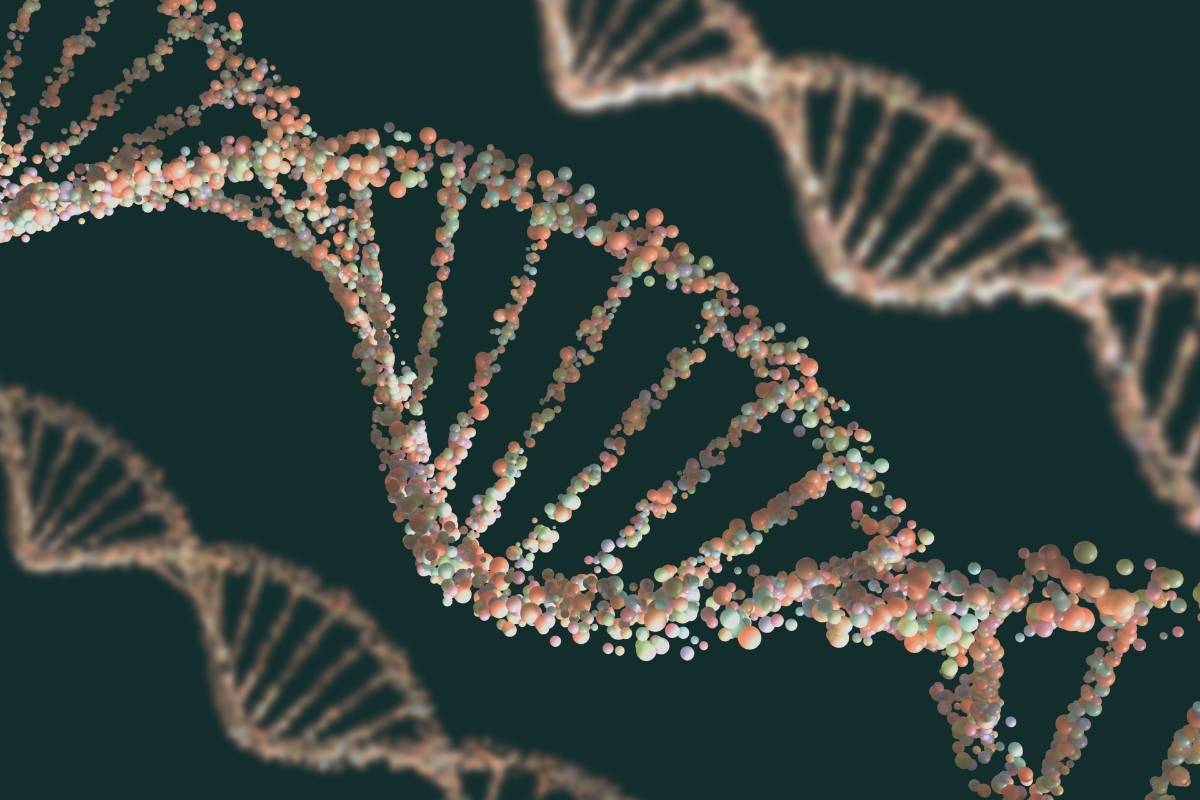For decades, scientists have been decoding the human genome, uncovering the secrets of life hidden within DNA. Yet, a perplexing mystery remains: the existence of “dark DNA.” This elusive genetic material defies detection using standard sequencing techniques, yet it plays a crucial role in evolution. Could dark DNA be the missing link in understanding species development and adaptation? Could it challenge fundamental principles of genetics and evolution? In this article, we explore how dark DNA could revolutionize our understanding of life itself.
What Is Dark DNA?
Dark DNA refers to stretches of genetic material that evade standard sequencing methods, making them nearly invisible to traditional genomic analysis. Unlike the well-documented “dark matter” of the universe, which makes up the majority of cosmic mass, dark DNA represents the hidden elements of the genome that could contain vital information about species evolution.
The Discovery of Dark DNA
The concept of dark DNA emerged when scientists studied the genomes of certain animals and discovered an unexpected absence of key genes that were crucial for survival. For instance, a team of researchers found that sand rats (Psammomys obesus) lacked several genes essential for vitamin metabolism—yet, these animals were perfectly healthy. Further analysis revealed that the genes were present but undetectable using traditional sequencing techniques, leading to the realization that some genetic material remains hidden due to structural or biochemical properties.

Why Does Dark DNA Evade Detection?
There are several reasons why dark DNA remains undetected by conventional sequencing methods:
- High GC Content – DNA sequences with a high proportion of guanine (G) and cytosine (C) bases tend to form tight, stable structures that are difficult to sequence.
- Repetitive Sequences – Some regions of the genome contain highly repetitive sequences that confuse sequencing algorithms, causing them to be ignored or misinterpreted.
- Epigenetic Modifications – Chemical modifications, such as DNA methylation, can render certain sequences unreadable by standard techniques.
- Structural Complexity – Some regions of DNA fold into intricate three-dimensional shapes, making them difficult to analyze.
The Role of Dark DNA in Evolution
The existence of dark DNA suggests that evolution may be driven not just by the visible genome, but also by hidden genetic elements that influence adaptation and survival. Here are some ways dark DNA could shape evolutionary biology:
1. Rapid Adaptation
Dark DNA may explain how species rapidly adapt to environmental changes. If certain genes remain hidden but can be activated under specific conditions, organisms might evolve faster than previously believed.
2. Hidden Genetic Reservoirs
Some scientists propose that dark DNA acts as a “genetic reservoir,” storing potentially useful genes that remain dormant until needed. When triggered by environmental pressures, these genes could be activated, providing new traits that enhance survival.
3. Reshaping Phylogenetics
The study of evolutionary relationships (phylogenetics) relies on genetic comparisons between species. If a significant portion of the genome remains hidden, our understanding of evolutionary history may be incomplete or even incorrect.

Dark DNA and Human Health
Dark DNA is not just an evolutionary curiosity—it could have profound implications for human health. Here’s how:
1. Undiagnosed Genetic Disorders
Many genetic diseases remain unexplained despite extensive sequencing efforts. Dark DNA may harbor mutations responsible for these conditions, suggesting that improved detection techniques could lead to better diagnostics and treatments.
2. Cancer and Epigenetics
Cancer research has shown that some tumors develop resistance to treatment due to genetic changes that evade standard sequencing. Dark DNA could be the missing factor in understanding why some cancers resist chemotherapy or return after remission.
3. Personalized Medicine
If dark DNA influences gene expression in unexpected ways, it could impact how individuals respond to medications. Unlocking its secrets might pave the way for truly personalized medicine, tailoring treatments to each person’s unique genetic makeup.
The Future of Dark DNA Research
As technology advances, scientists are developing new methods to uncover dark DNA. Some promising approaches include:
- Long-Read Sequencing – New sequencing technologies like PacBio and Oxford Nanopore allow for the reading of longer DNA fragments, reducing errors in detecting hidden sequences.
- Epigenetic Profiling – Mapping chemical modifications on DNA can reveal regions that are unreadable by traditional sequencing methods.
- Computational Genomics – Advanced bioinformatics and machine learning algorithms can predict the presence of dark DNA by analyzing genome-wide patterns.
- Functional Studies – Studying gene expression at the RNA and protein levels can provide clues about the hidden roles of dark DNA.
Dark DNA is reshaping our understanding of genetics and evolution. This mysterious genetic material challenges existing theories and opens new avenues for scientific discovery. Whether it explains rapid adaptation, holds the key to undiagnosed diseases, or revolutionizes personalized medicine, one thing is certain: dark DNA is one of the most exciting frontiers in modern biology. As research progresses, we may find that the most important parts of our genome have been hiding in plain sight all along.
Stay updated on the latest breakthroughs in genetics and evolution! Follow cutting-edge research on dark DNA and other genomic mysteries to discover how science is redefining life itself.


